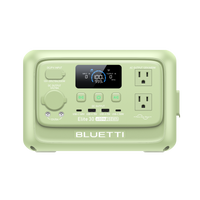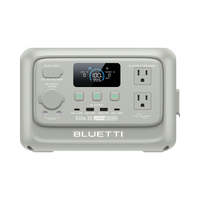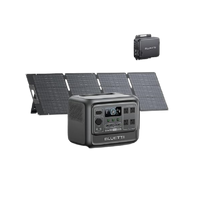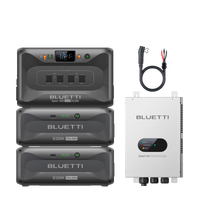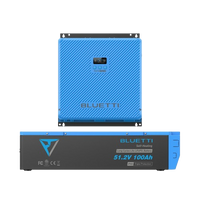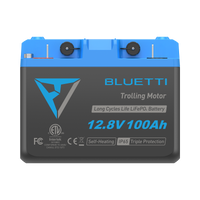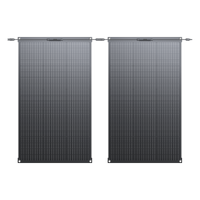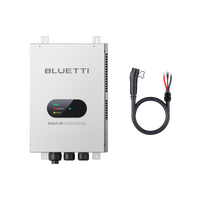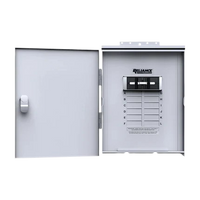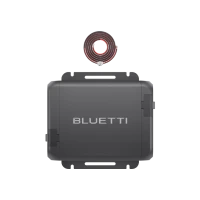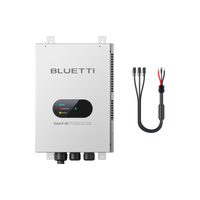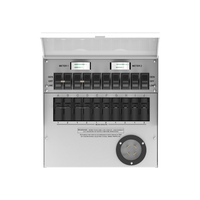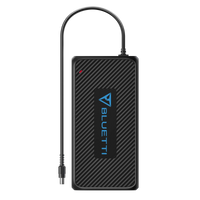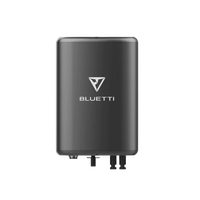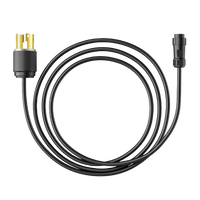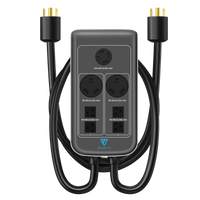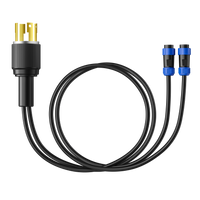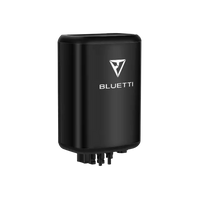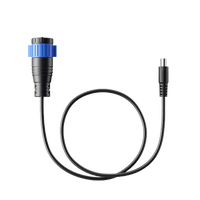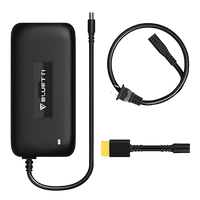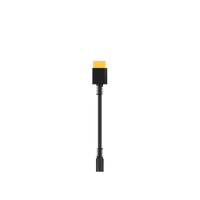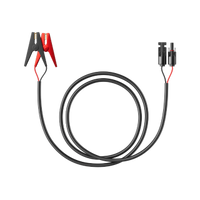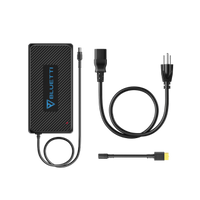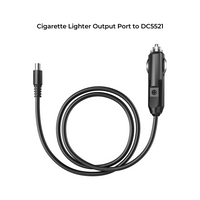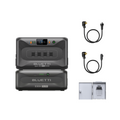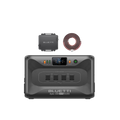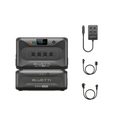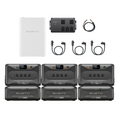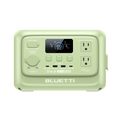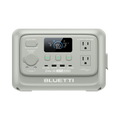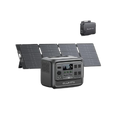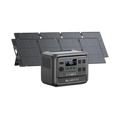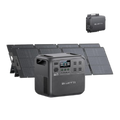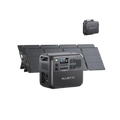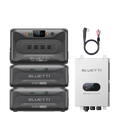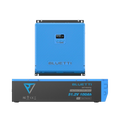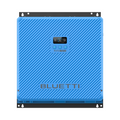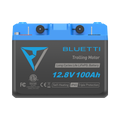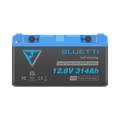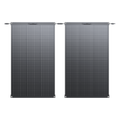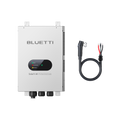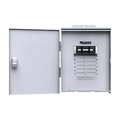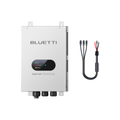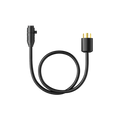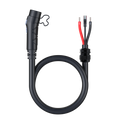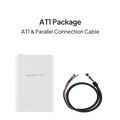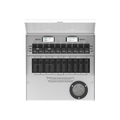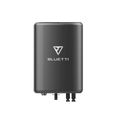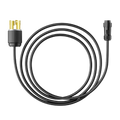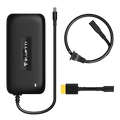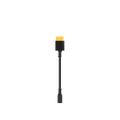Portable power stations support various charging methods. Fortunately, the methods include solar energy, which is convenient because the sun’s energy is free and readily available.
Charging your portable power station using solar panels is easy. However, there are some important factors to consider, such as solar panel compatibility and placement. Here is a comprehensive guide on charging a portable power station using solar panels, including the necessary precautions to take before, during, and after charging. The guide also includes an overview of convenient alternative charging methods for a truly versatile power supply solution.
Can You Charge a Portable Power Station with Solar Panels?
Yes, and here is an overview of three important factors to keep in mind when charging a portable power station using a solar panel:
-
Compatibility
Most solar panels are compatible with most portable power station models. However, compatibility can become an issue based on aspects such as size and design differences. For example, a large, heavy-duty solar panel can generate excess electricity, potentially overpowering the power station and damaging integral components such as the battery.
It is important to ensure that the solar panels and portable power stations are compatible in all aspects. As such, check whether the power station can handle the solar panel’s electricity production capacity. Additionally, check whether the connector types on the power station and solar panel match. It would also be prudent to buy a charge controller to regulate the electricity flow from the solar panel to the power station.
What are the Most Efficient Types of Solar Panels?
Solar panels come in various types, including polycrystalline and monocrystalline panels. Monocrystalline panels convert 15-24% of sunlight into electricity, while polycrystalline panels convert 13-18%. As such, monocrystalline solar panels are recommended for optimal efficiency. However, it is worth noting that the former are more expensive than the latter.

Interestingly, many portable power stations come with integrated solar panels. For example, the BLUETTI AC200P solar generator comes with three PV200S solar panels. The panels feature monocrystalline silicon cells for optimal efficiency, rated up to 23.4%. Additionally, they feature standard MC4 connectors and 3m cables to connect to your portable power station. Ideally, OEM solar panels are recommended for flawless compatibility.
-
Solar Panel Placement
Solar panels require maximum exposure to sunlight to optimize their electricity production capacity. To this end, charging your portable power station can be frustratingly slow if the solar panels are not placed and angled properly.
Did you know that the sun travels across the southern sky in the Northern Hemisphere? As such, it is prudent to place the solar panel facing true south for maximum exposure to sunlight. Unfortunately, this can be complicated if your property’s roof faces north. In that case, you can angle the solar panel at around 60 degrees to maximize exposure to sunlight, albeit it would still be limited. Alternatively, you can get a portable solar panel that would be easy to move around.
Besides placement, the solar panel’s angle is also important in determining exposure to sunlight. Ideally, the solar panel would lie flat at a 90-degree angle if you were located along the equator. However, the best angle for your precise location should match your latitude – for example, if your latitude is 30 degrees, the solar panel should be angled at 30 degrees.
Interestingly, some portable power station models feature solar trackers that track the sun’s position and automatically adjust the solar panels for maximum exposure. Solar trackers are especially convenient when living off the grid or in places with low sunlight.
-
Cable Connections
Finally, you can connect your portable power station to the solar panel. Fortunately, this is relatively easy, as the power station has an input jack labeled “Solar Input” or “DC In,” where you should plug in the solar panel’s cable.
However, the various jacks can be confusing, so check the manual or consult the manufacturer if you are unsure of which jacks and cables to connect. It is also worth noting that you may need to use a solar extension cable if the power station and solar panels are far apart, such as when using roof-mounted solar panels.
Related articles: What Can Do with 200w Solar Panel?
How Much Does It Cost to Install Solar Panels in Canada?
The Freedom to Power Your Home - Portable Solar Panels for Backup Energy
How Many Solar Panels Can You Connect to a Portable Power Station?
Some portable power station models are limited to one solar panel. However, premium models with large batteries can support two or more panels, increasing the charging capacity and speed. For example, charging a 1,000Wh battery using one 200W solar panel can take ten hours or more. In contrast, using two panels reduces the charging time to about five hours, while five can get the job done in about two hours.
Technically, you can daisy-chain multiple solar panels together using a parallel cable connector. However, ensure that you only use as many panels as the power station can withstand. To this end, using a charge controller is also necessary.
Precautions for Charging Portable Power Stations with Solar Panels
Charging a portable power station using solar panels is relatively easy. However, there are several precautions to take during and after charging to ensure the power station’s safety and efficiency. Here is an overview of four important precautions to keep in mind:
-
Monitoring the Charging Process
Portable power stations feature screens that display the battery’s level, charging speed, and estimated waiting time. Some models also come with downloadable mobile apps for remote control and Battery Management Systems (BMS) for managing factors such as heat and overcharging.
Overall, it is advisable to monitor the charging progress to spot issues such as overheating and overcharging, which can reduce performance and durability. Ideally, you should disconnect the charger as soon as the battery refills to prevent overcharging, especially if the power station doesn’t have a charge controller.
Additionally, while the power station naturally heats to certain levels during charging, it is also important to pause charging if overheating occurs. Moreover, it is important to charge the battery in a cool and ventilated environment.
-
Recommended Charging Levels
Most portable power stations use lithium-ion batteries, which are self-discharging. To this end, the amount of electricity stored in the power station can depreciate over time despite not using it.
As such, charging the battery to 100% is always advisable. Moreover, it is advisable to maintain the battery level above 60% and recharge at least once every three months. Maintaining a fully charged battery is especially important if your power station also functions as an in-grid Uninterruptable Power Supply (UPS).
-
Recommended Charging Frequency
Interestingly, a portable power station’s life is measured based on the number of charging cycles the battery can support. For example, the BLUETTI EP500 solar generator can support over 6,000 charging cycles. Overall, it is recommended to charge your portable power station only when necessary. Ideally, you should only recharge after using more than 80% of the power and then store it.
-
Storing the Battery After Charging
It is recommended to store your portable power station after charging and only deploy it when needed. The ideal storage environment should be cool and covered to prevent heating and direct exposure to sunlight. Ideally, the storage room’s temperature should range between 150C (59oF) and 350C (950C). Moreover, the room’s humidity should be low, as excess moisture in the air can discharge the battery and cause other problems.
3 Alternative Portable Power Station Charging Methods

Some portable power stations are versatile and can support multiple charging methods. For example, the BLUETTI EP500pro solar generator supports up to seven different charging methods, making it convenient and easy to use. Here is an overview of three alternative portable power station charging methods:
-
Standard AC Outlet
You can charge your portable power station using a standard AC wall outlet. Interestingly, this is the fastest and one of the easiest ways to charge your power station. It is especially convenient for charging during winter when the sunlight is limited or in between power outages. You can plug the charging cable into the power station’s DC socket or USB-C port.
-
Dual Solar Plus AC
Some portable power stations can simultaneously support two charging methods, including solar and direct AC. Interestingly, combining two charging methods reduces the charging time to one or two hours, depending on the battery’s capacity and solar charging speed.
-
Car Battery
Many portable power stations are also compatible with ordinary car batteries and charging systems. It is as simple as connecting the power station’s USB charging cable to the car’s output port. Overall, it is a convenient option when traveling or camping. Additionally, it can come in handy in emergencies when both the sun and power are out.

It is important to ensure that the car adapter’s voltage output is compatible with the portable power station before charging. However, it is worth noting that charging using the car’s battery takes longer than using an AC wall outlet or multiple solar panels.
Final Thoughts
Charging a portable power station using solar panels is easy and convenient. Overall, you only need to set up your solar panels and connect the charging cord to your power station. However, you must also take certain precautions to maintain the power station’s efficiency and safety. Moreover, you can also use other convenient alternative charging methods, such as AC wall outlets.













